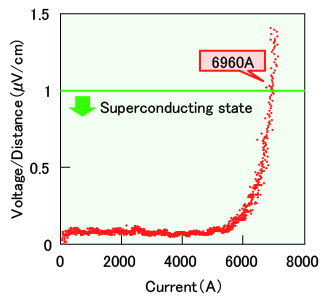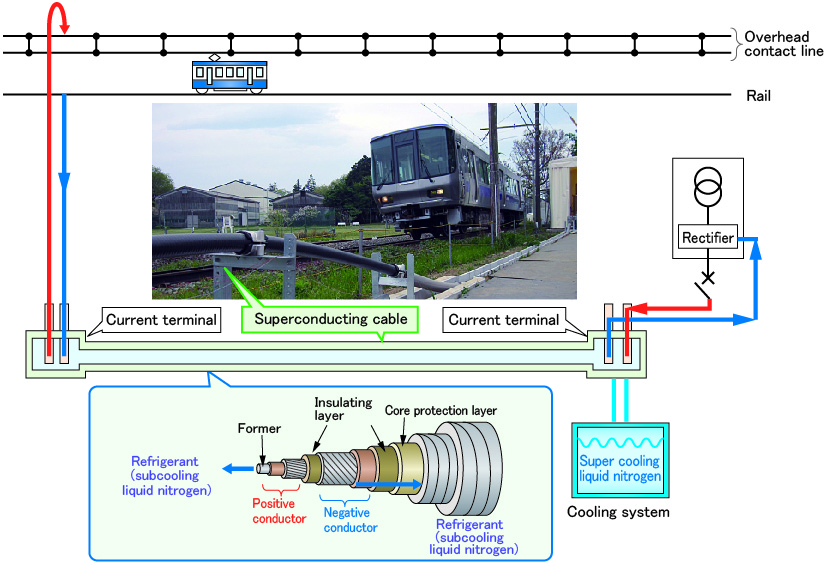1. Operating trains using superconducting cable
- A prototype DC superconducting cable for railway system was built and tested on the RTRI test line.
- Current, voltage resistance, and cooling tests were performed, demonstrating that the superconducting cable system was applicable to train operations.
Due to electrical resistance in the (copper) overhead contact wire carrying power from the substation to the train, regeneration cancellation and falls in voltage can occur on DC railways. Work was therefore carried out to adapt superconducting material and reduce its resistance to zero, to make a feeder, which would reduce loss during transmission and control regeneration cancellation and voltage drops. In addition using a superconducting cable as a connection between substations makes it possible to level and consolidate the loads.
The superconducting cable system developed in this research was designed to operate at a rated voltage of 1.5 kV and rated current of 5 kA so that it can be used on an actual railway line (Fig. 1). In order to scale down the size of the system and reduce heat load, a counterflow circulation method was selected, which only structurally requires a single cooling tube to circulate refrigerant. Using this method the cooling system can then be designed as a single body, and makes the overall system more compact (Fig.2).
The superconducting cable system (31m) laid along RTRI test line was subjected to current, voltage resistance and cooling tests, inter alia, validating the world's first ever successful attempt to use superconducting cable as a feeder cable system to operate trains.

Fig.1 Results from current tests
Fig.2 Superconducting cable system for railway